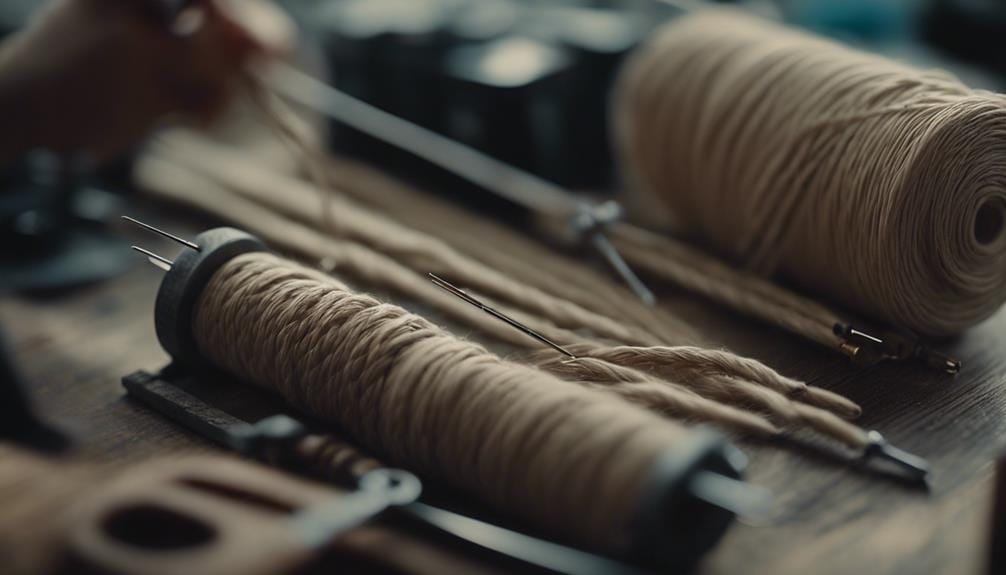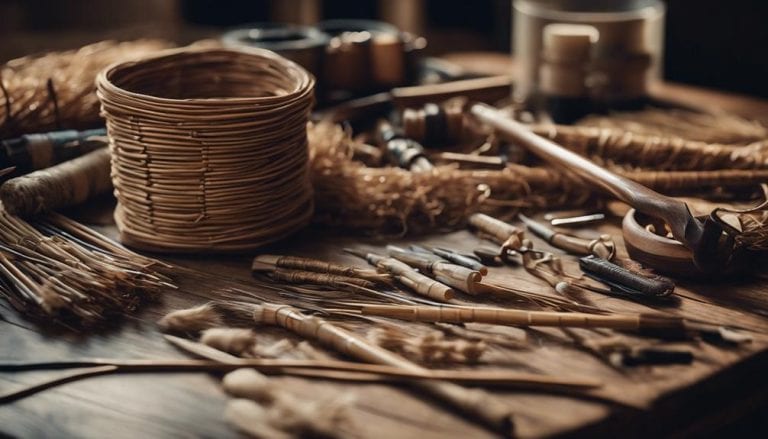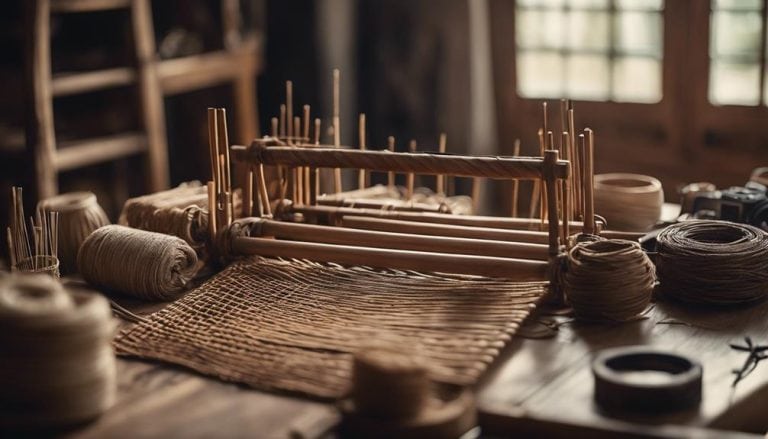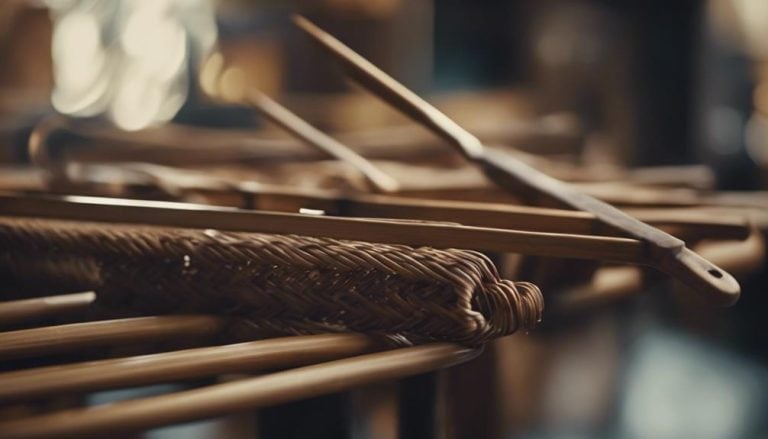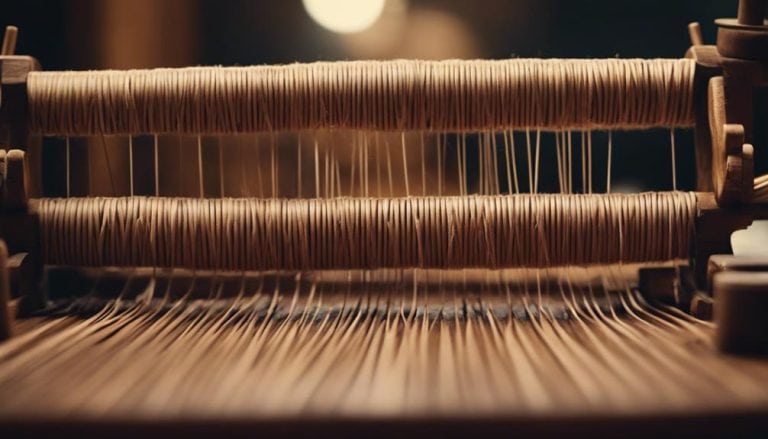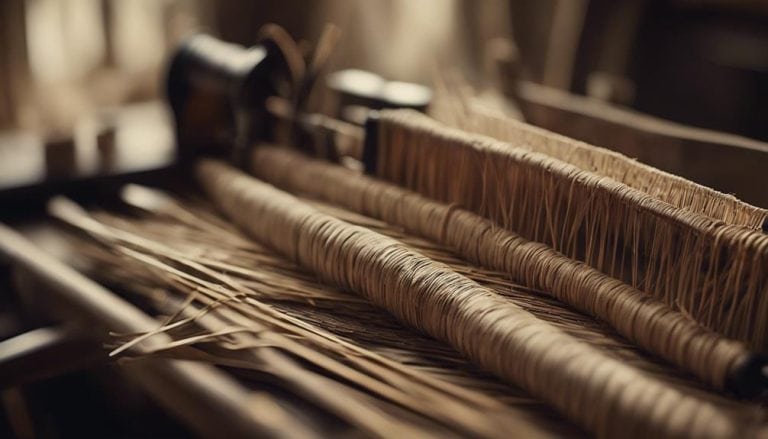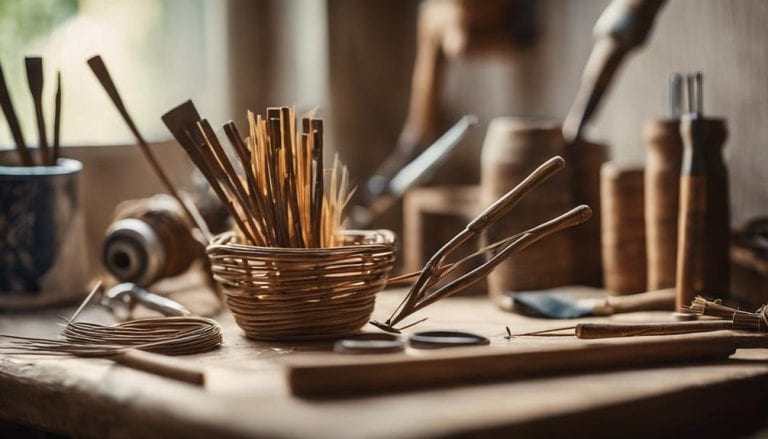Essential Tools for Danish Cord Weaving
Weaving Danish cord is like crafting an intricate tapestry of strength and beauty. As I pick up my tools, each essential for the task at hand, I am reminded of the precision and care required for this traditional craft.
But what happens when the tensioner slips or the scissors are dull? The success of my weaving project hinges on the tools I choose. Let’s explore the key instruments that can make or break a Danish cord-weaving endeavor.
Danish cord weaving is a traditional craft that requires specific tools to create intricate patterns and designs. Some essential tools for Danish cord weaving include a loom, shuttle, needle, and cords and yarns. These tools help weavers to create unique and beautiful pieces of art.
Key Takeaways
- Select the right weaving needle size for precise results.
- Utilize a cord puller tool to maintain pattern integrity.
- Use an adjustable tensioner for consistent cord tension.
- Opt for essential scissors with razor-sharp blades for cutting Danish cords.
Weaving Needle for Danish Cord
A well-crafted weaving needle is essential for achieving precise and flawless results when weaving Danish cord. Needle material options for Danish cord weaving needles commonly include metal or plastic, offering durability and ease of handling. Care tips for these needles involve keeping them clean and dry between uses to prevent rust or damage that could affect the weaving process.
Selecting the right needle size is crucial for efficient weaving. A too thick needle may struggle to pass between the cords smoothly, while one that is too thin might not provide enough stability. Weaving techniques with the needle involve guiding the cord through intricate patterns with finesse, ensuring each strand aligns perfectly for a professional finish.
Cord Puller Tool for Weaving
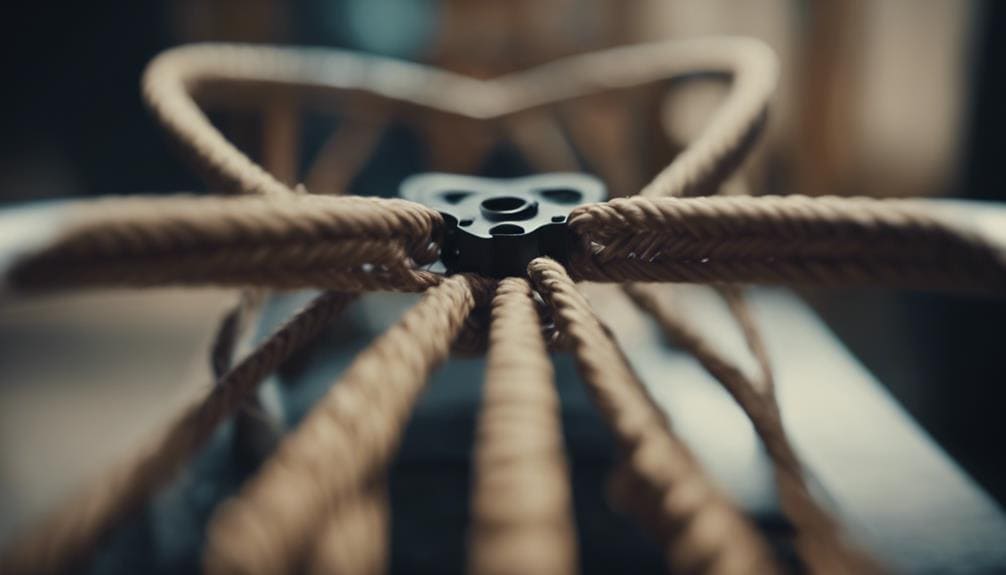
A reliable cord puller tool is indispensable to achieve a professional finish and ensure consistent tension while weaving Danish cord.
- The cord puller tool aids in cord tensioning, allowing for even and secure weaving.
- It plays a crucial role in maintaining the integrity of weaving techniques by ensuring consistent tension throughout the process.
- This tool is essential for preserving the pattern integrity and stability of the woven seat or backrest.
- Designed to be ergonomic and user-friendly, it reduces hand strain during intricate weaving tasks.
In my experience, using a cord puller tool has significantly improved the efficiency and precision of my weaving projects. This tool makes intricate designs more manageable, and the weaving process flows smoothly. For anyone looking to elevate their Danish cord weaving skills, investing in a quality cord puller tool is a practical choice that can make a difference in the final result.
Tensioner for Danish Cord Weaving
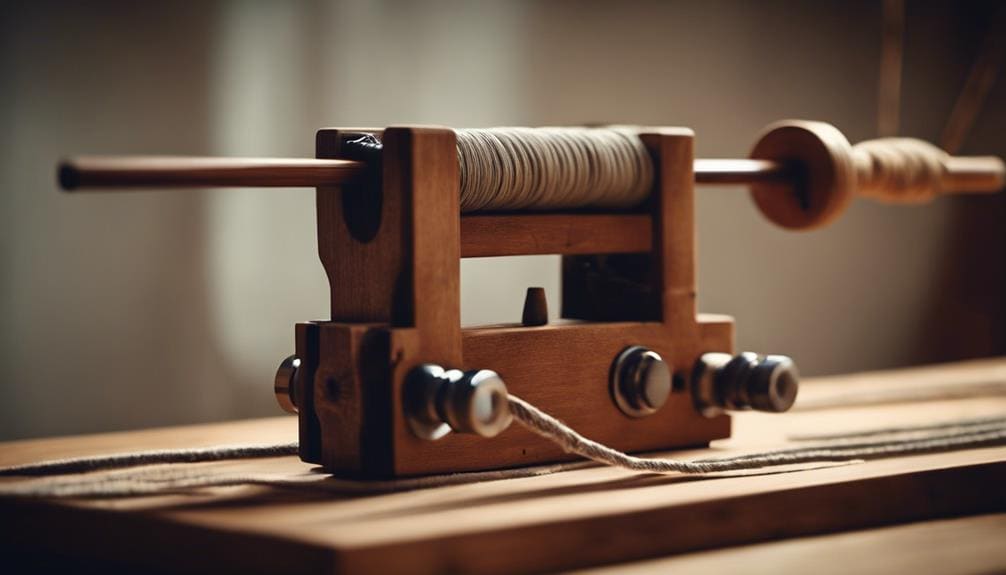
Having mastered using a cord puller tool for Danish cord weaving, a reliable tensioner is the next crucial tool in achieving impeccable results. An adjustable tensioner is vital for maintaining consistent tension throughout the weaving process. It plays a key role in ensuring that the cord remains taut and even, preventing loose or uneven weave sections.
Using a tensioner, weavers can adapt to different weaving techniques and chair designs, allowing for versatility and precision in their work. The adjustable feature of a tensioner enables weavers to customize the tension based on the specific requirements of their weaving patterns. This tool helps achieve a professional finish and contributes to the overall quality of the Danish cord weaving.
Whether you are a beginner or an experienced weaver, a tensioner is indispensable for producing high-quality and visually appealing woven pieces. Embracing a tensioner in your weaving practice will elevate your craftsmanship and empower you to confidently explore intricate weaving techniques.
Essential Scissors for Cutting Cord
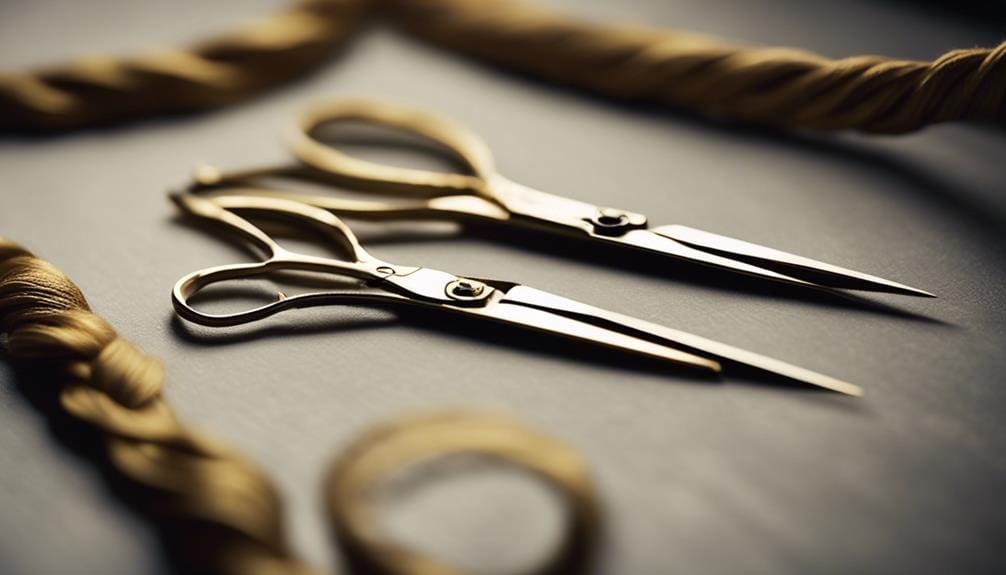
For precise cutting of Danish cord, selecting sharp, high-quality scissors with pointed tips is essential.
- Sharpness: Ensure the scissors are razor-sharp to effortlessly slice through the Danish cord without causing fraying or unraveling.
- Quality: Opt for scissors specifically designed for cutting fabric or heavy-duty materials to guarantee clean and precise cuts every time.
- Comfort: Look for scissors with ergonomic handles that provide comfort and reduce hand fatigue during long weaving sessions.
- Durability: Choose scissors that are sturdy enough to cut through the thickness of Danish cord without bending or losing their sharpness.
When it comes to maintaining your scissors for Danish cord weaving, regular upkeep is crucial to their performance. Keep them sharp through frequent sharpening and cleaning to ensure they remain efficient for your weaving projects. Additionally, practice precision cutting techniques to achieve clean edges and smooth finishes on your Danish cord creations.
Sturdy Frame for Weaving Support
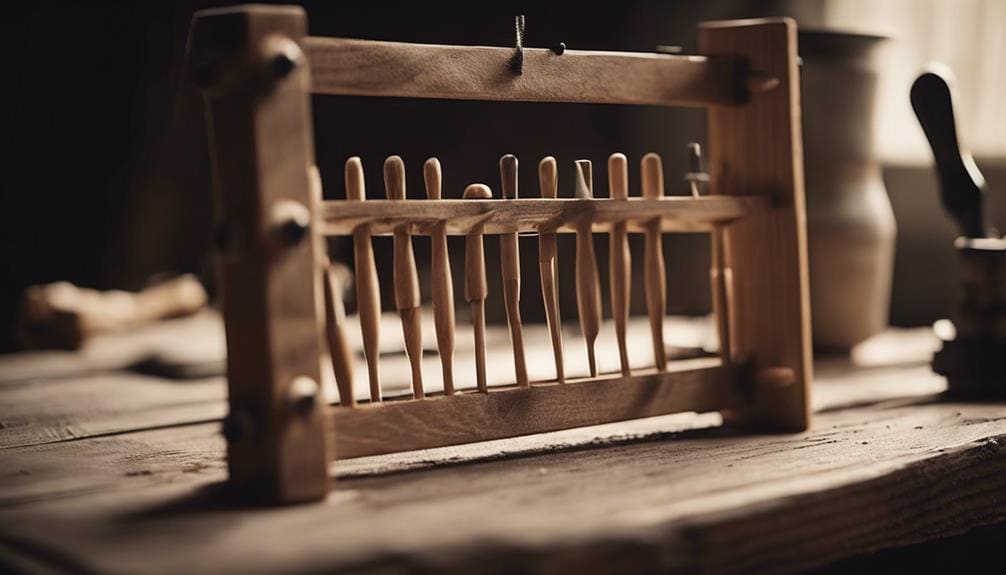
A sturdy frame for weaving support is crucial in Danish cord weaving to maintain stability and effectively facilitate the intricate weaving process. Frame stability is key to handling the tension and intricate weaving techniques of Danish cord weaving. When considering frame construction, opt for durable materials like hardwood to withstand the pressure exerted during weaving. The frame’s size should be appropriate for the weaving pattern, providing ample space for future challenges.
To further enhance stability, securely fasten the frame using clamps or supports to prevent movement or shifting while weaving. Smooth edges and corners on the frame are essential to avoid snagging or damaging the Danish cord during weaving. By investing in a well-constructed and properly sized frame made of durable material, you can ensure a smooth and efficient Danish cord weaving experience.
Danish Oil for Cord Maintenance
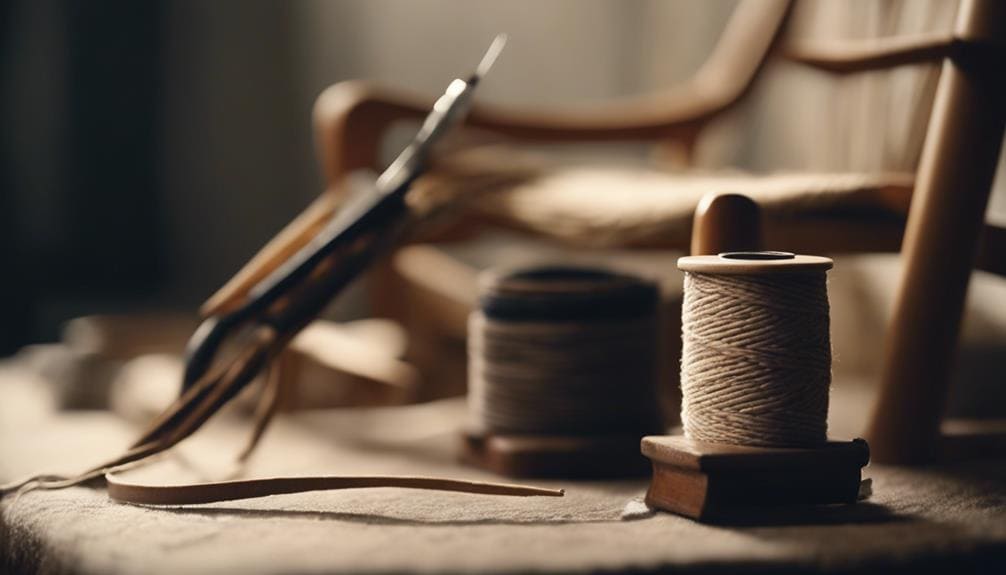
Utilizing Danish oil is essential for maintaining the longevity and quality of Danish cord by nourishing its paper fibers and providing a protective seal against environmental elements. Danish oil is a popular choice for cord maintenance due to its rejuvenating properties and protective benefits.
Here are some key points to consider when using Danish oil for your cord maintenance:
- Oil Application Techniques, Benefits: Regularly applying Danish oil can help extend the lifespan of Danish cord by preventing drying out and cracking. A soft cloth or brush is recommended to distribute the oil evenly over the cord’s surface for optimal results.
- Cord Care Tips, Best Practices: Danish oil not only nourishes the paper fibers of the cord but also enhances its natural color and texture. This oil acts as a barrier against moisture and dirt, maintaining the durability of the cord over time.
Quality Danish Cord Material
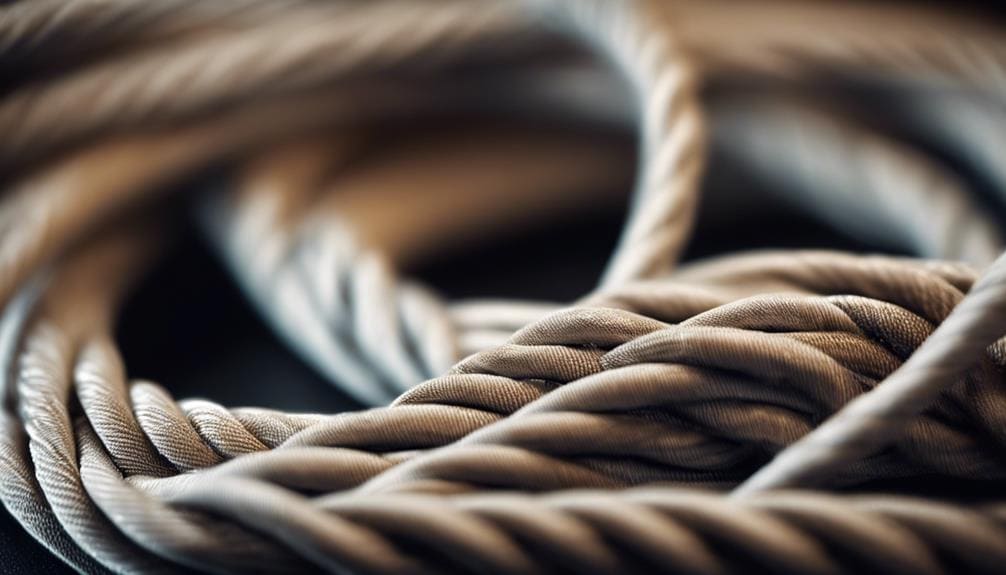
To maintain the longevity and quality of woven furniture seats, understanding the characteristics of quality Danish cord material is crucial. Danish cord, traditionally made of tightly twisted paper, offers exceptional cord strength and durability, making it an ideal choice for weaving projects.
When selecting Danish cord for your furniture weaving endeavors, opt for a diameter of 1/8 inch, a common size that ensures a balance between strength and flexibility in weaving techniques. Quality Danish cord is highly resistant to wear and tear, guaranteeing a long-lasting finish for your furniture pieces.
Moreover, this material is celebrated for its sustainability and eco-friendliness, adding a natural touch to your creations. The unique composition of Danish cord allows for smooth weaving patterns and intricate designs, enabling you to explore various weaving techniques to elevate your furniture upholstery.
| Characteristics | Benefits |
|---|---|
| Exceptional cord strength | Ensures durability and longevity |
| Sustainable material | Adds a natural touch to furniture |
| Allows intricate designs | Enables diverse weaving techniques |
Frequently Asked Questions
How Do You Do a Danish Cord Weave?
To do a Danish cord weave, I attach the cord to the frame, maintain tension, follow weaving patterns, and splice the cord at the end. Basic techniques, materials, and weaving tips are crucial for a successful project.
What Is the Nail Spacing for Danish Cord Weaving?
I space L-shaped nails 1 inch apart for Danish cord weaving to ensure proper tension control. Consistent nail spacing supports an even weave, creating a visually appealing pattern. Varying spacing based on furniture design is key for professional results.
Which Is Better Laced or Unlaced Danish Cord?
Laced Danish cord provides a sleek finish suited for modern designs, while unlaced cord offers a rustic appeal. Beginners may find laced easier to work with due to its smooth texture. For a traditional look, unlaced is ideal.
How Much Danish Cord Do I Need?
Calculating measurements for the Danish cord is crucial. The amount needed varies depending on the chair design, material options, and pattern. Having an extra cord is wise for mistakes. Understanding specific requirements ensures accurate amounts for weaving.
Conclusion
In conclusion, having the essential tools for Danish cord weaving is crucial for achieving a professional and durable finish. While some may argue that these tools are unnecessary, imagine trying to weave an intricate pattern without the proper scissors – it would be like cutting a straight line with a dull blade. Investing in quality tools will make the weaving process smoother and more enjoyable, resulting in a beautiful and long-lasting chair seat.

